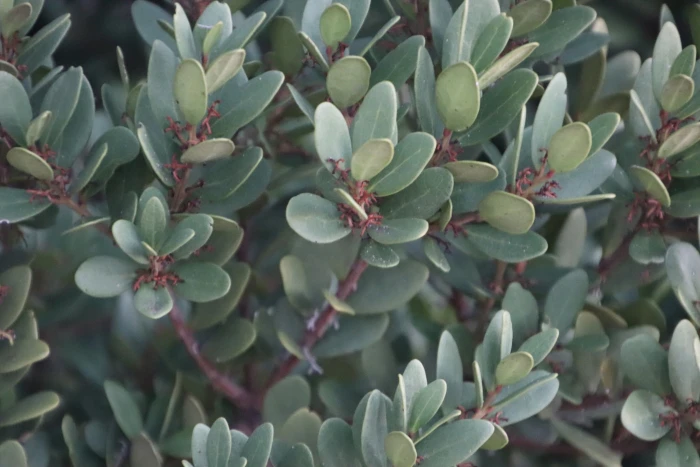Sea Guarrie
(Euclea racemosa)
Sea Guarrie (Euclea racemosa)
/
/

Tony Rebelo
CC BY-SA 4.0
Image By:
Tony Rebelo
Recorded By:
Copyright:
CC BY-SA 4.0
Copyright Notice:
Photo by: Tony Rebelo | License Type: CC BY-SA 4.0 | License URL: http://creativecommons.org/licenses/by-sa/4.0/ | Rights Holder: Tony Rebelo | Publisher: iNaturalist | Date Created: 2019-04-28T18:05:38-07:00 |

























Estimated Native Range
Climate Requirements for Reading, Pennsylvania
| This Plant | Your Site | Plant Suitability for Your Location | ||
|---|---|---|---|---|
| • Precipitation | 3" - 71" | 44" | Aquatic | Aquatic |
| • High Temp. | 72°F - 91°F | 86°F | Your summer temperatures are normal for this plant. | Excellent |
| • Low Temp. | 41°F - 69°F | 21°F | Your winter temperatures may be too cold for this plant | Too cold |
This plant may not grow well at your location - your precipitation is too high.
Summary
Euclea racemosa, commonly known as sea guarrie or dune guarrie, is an evergreen tree or shrub native to coastal dune forests, thickets, and dry woodland areas along the Indian Ocean coast of Africa, from Egypt to South Africa, and extending to the islands of Comoros, as well as to Oman and Yemen. It typically grows to a height of 2-9 meters with a similar spread, featuring a dense, rounded to spreading crown. The leaves are dark green, glossy, and leathery, providing a year-round dense foliage that is excellent for privacy hedges or screens. Sea guarrie blooms with small, inconspicuous white flowers that are followed by an array of berry colors from red to purple and black as they mature, which are highly attractive to birds and other wildlife.
The dense foliage of Euclea racemosa makes it an ideal choice for creating windbreaks in coastal areas, as well as for topiary or formal hedges in residential and commercial landscapes. It is drought-tolerant once established, requiring minimal water, and thrives in a variety of soil types, although it prefers well-drained sandy soils. Full sun to partial shade suits this plant best. In addition to its ornamental and practical uses, the berries are harvested locally to produce "Guarrie vinegar," and the wood is sometimes used for crafting. Gardeners should note that while it is generally pest-free, it can suffer from root rot if overwatered or planted in poorly drained soils.CC BY-SA 4.0
The dense foliage of Euclea racemosa makes it an ideal choice for creating windbreaks in coastal areas, as well as for topiary or formal hedges in residential and commercial landscapes. It is drought-tolerant once established, requiring minimal water, and thrives in a variety of soil types, although it prefers well-drained sandy soils. Full sun to partial shade suits this plant best. In addition to its ornamental and practical uses, the berries are harvested locally to produce "Guarrie vinegar," and the wood is sometimes used for crafting. Gardeners should note that while it is generally pest-free, it can suffer from root rot if overwatered or planted in poorly drained soils.CC BY-SA 4.0
Plant Description
- Plant Type: Tree, Shrub
- Height: 9-12 feet
- Width: 6-10 feet
- Growth Rate: Moderate
- Flower Color: White
- Flowering Season: Summer
- Leaf Retention: Evergreen
Growth Requirements
- Sun: Full Sun, Part Shade
- Water: Medium
- Drainage: Medium, Fast
Common Uses
Bird Garden, Drought Tolerant, Low Maintenance
Natural Habitat
Coastal dune forests, thickets, and dry woodlands along the Indian Ocean coast of Africa, extending to Comoros, Oman, and Yemen
Other Names
Common Names: Guarri, Ghwarrie, Common Guarri, Bushveld Guarri, River Guarri
Scientific Names: Euclea racemosa
GBIF Accepted Name: Euclea racemosa